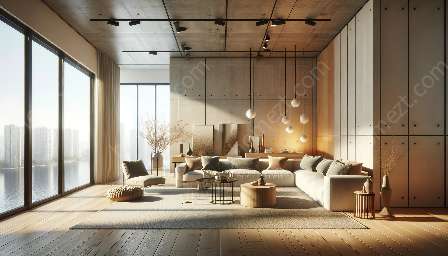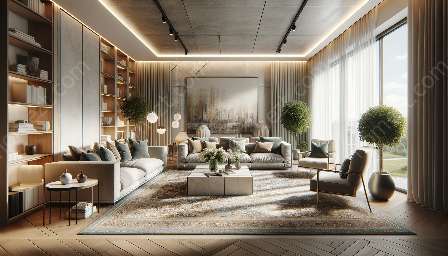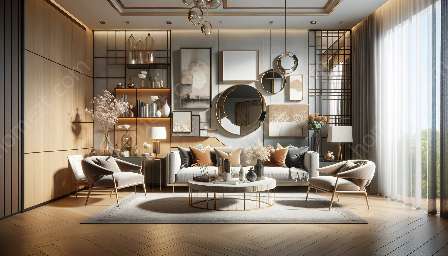Wall placement is a foundational element in interior design that significantly impacts the overall look and feel of a room. The strategic placement of walls can enhance furniture arrangement and complement the style of home furnishings, creating a harmonious and attractive living space.
Understanding Wall Placement
Before delving into furniture arrangement and home furnishings, it is essential to understand the significance of wall placement. Walls serve as the backdrop for furniture and decor, setting the stage for the overall visual appeal of a room. Whether it's the positioning of interior walls within a room or the external walls of a home, the placement can greatly influence the functionality and aesthetics of the space.
Influencing Furniture Arrangement
Strategic wall placement can effectively guide furniture arrangement, optimizing the use of space and creating a balanced layout. For example, in an open-concept living area, a well-positioned wall can define separate zones for lounging, dining, and entertainment, while also accommodating the placement of furniture within each area.
An exterior wall with strategically placed windows can provide natural light and scenic views, offering an ideal setting for a cozy reading nook or a stylish seating area. Similarly, an interior wall can serve as a structural element for mounting shelves, artwork, or entertainment centers, enhancing the functionality of the space while contributing to the overall aesthetic.
Harmonizing with Home Furnishings
Wall placement also plays a crucial role in harmonizing with home furnishings. The location of walls can create an ideal backdrop for showcasing furniture and decor, allowing them to shine within the space. Additionally, the color and texture of walls can complement the style of furnishings, establishing a cohesive and inviting environment.
For instance, a feature wall with a textured finish can add depth and character to a room, serving as a captivating backdrop for a statement piece of furniture or a collection of art. Furthermore, the strategic placement of accent walls can enhance the visual appeal of specific areas within a home, creating focal points that highlight the beauty of complementary furnishings.
Tips for Effective Wall Placement
- Consider Traffic Flow: When planning wall placement, it's crucial to consider the natural flow of movement within a space. Position walls to facilitate easy circulation while maintaining designated areas for activities and furniture placement.
- Maximize Natural Light: Utilize wall placement to maximize the intake of natural light, which can create a bright and inviting atmosphere. Consider the orientation of windows and walls to optimize natural lighting throughout the day.
- Balance Openness and Privacy: Strive to achieve a balance between open, communal spaces and private, intimate areas by thoughtful placement of walls. This can enhance the functionality of each space and contribute to a cohesive design.
- Coordinate with Furniture: Coordinate the placement and alignment of walls with the scale and arrangement of furniture. This alignment creates visual harmony and ensures that the walls complement the furnishings, rather than interrupting the flow of the design.
Conclusion
Wall placement is a critical aspect of interior design, influencing furniture arrangement and serving as the canvas for home furnishings. When thoughtfully considered and strategically implemented, wall placement can transform a space, creating an attractive and functional environment that reflects the unique style and needs of its occupants.




